Post by 9fsay on Jun 2, 2014 20:29:49 GMT 2
Another of my posts from the MOCKZN forum.
It's not often that one gets the chance to see a 1959 model in the flesh. I heard about a Mk1 mini at the Matjiesfontein Transport Museum a while back and on a trip north I stopped in for a look. To my pleasant surprise it was not only a Mk1 but one from 1959!! The wiper motor reads 11 59 which makes it a November model. I took some pictures of some of the early features that distinguishes '59ers and early 1960's from later cars. There is a site dedicated to 1959 minis www.1959miniregister.com/ which will tell you all about changeover dates of the different features and other interesting things (if you are a nerd like me).
As I've mentioned on another thread on here, Ryno's book notes that a lot of the interior trim on SA assembled minis were local right from the start. This obviously makes it unique and extremely rare as not many '59ers survive. I'll let the pictures do most of the talking from here: (will give more info later)
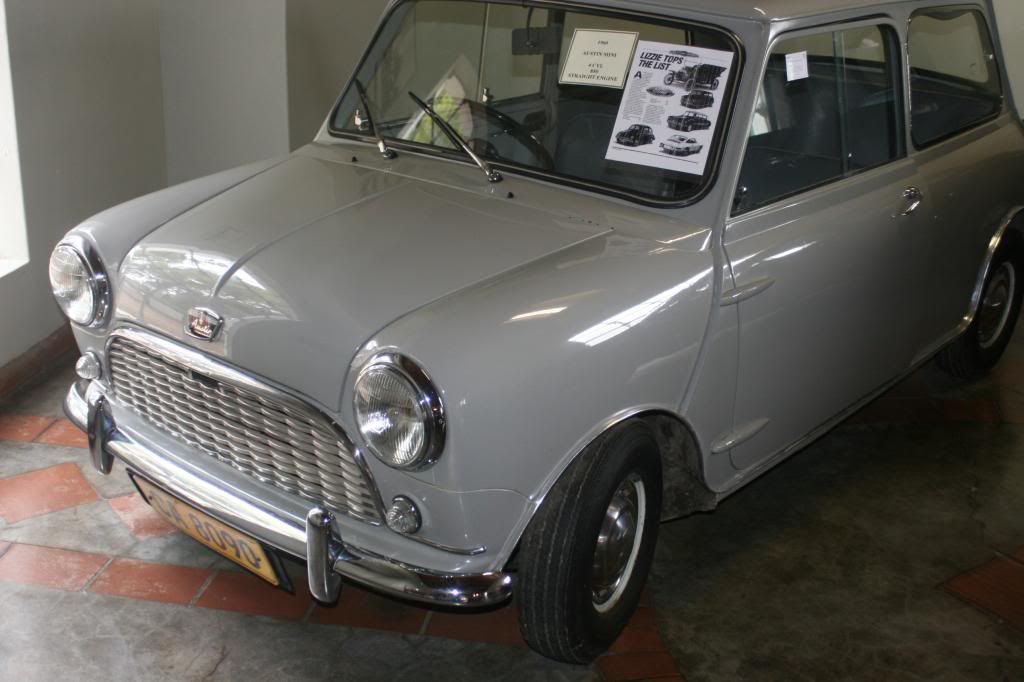
No front reflectors - like UK cars
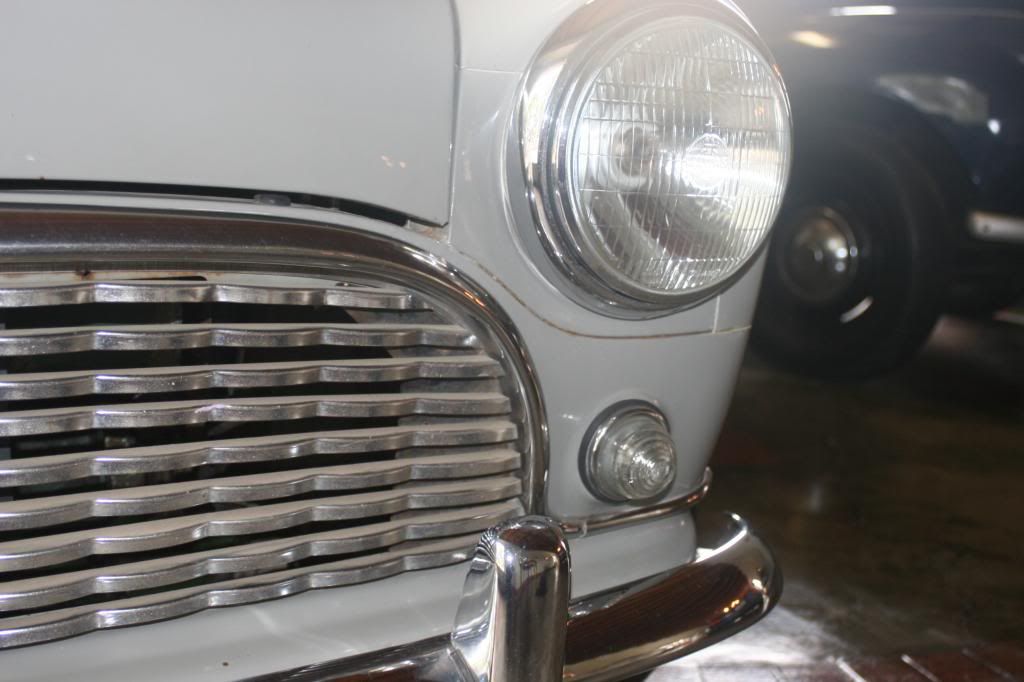
Rear - I guess the really early ones were still called Austin Seven in SA. They soon turned to Austin 850.
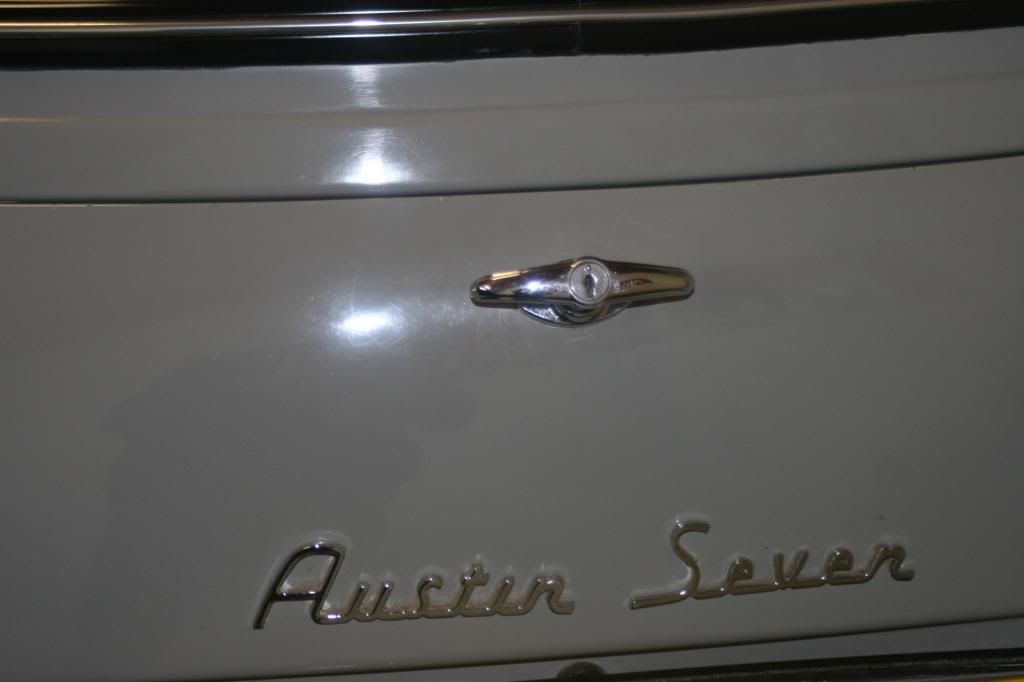
59's had short little peg legs on the back of the seats
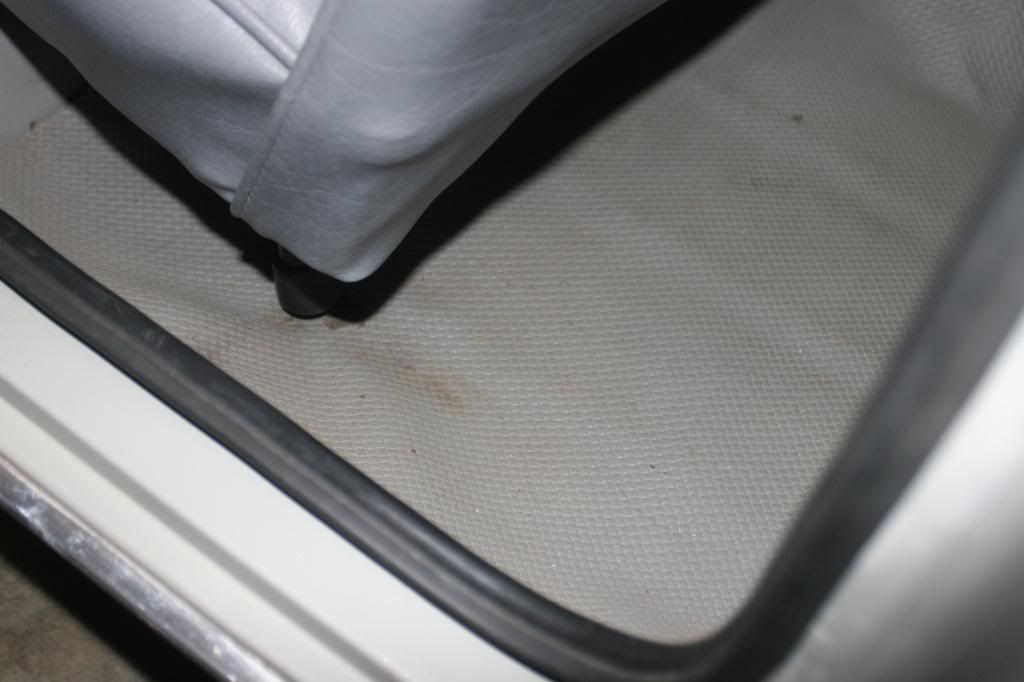
In front, the seats were mounted on brackets welded to the crossmember
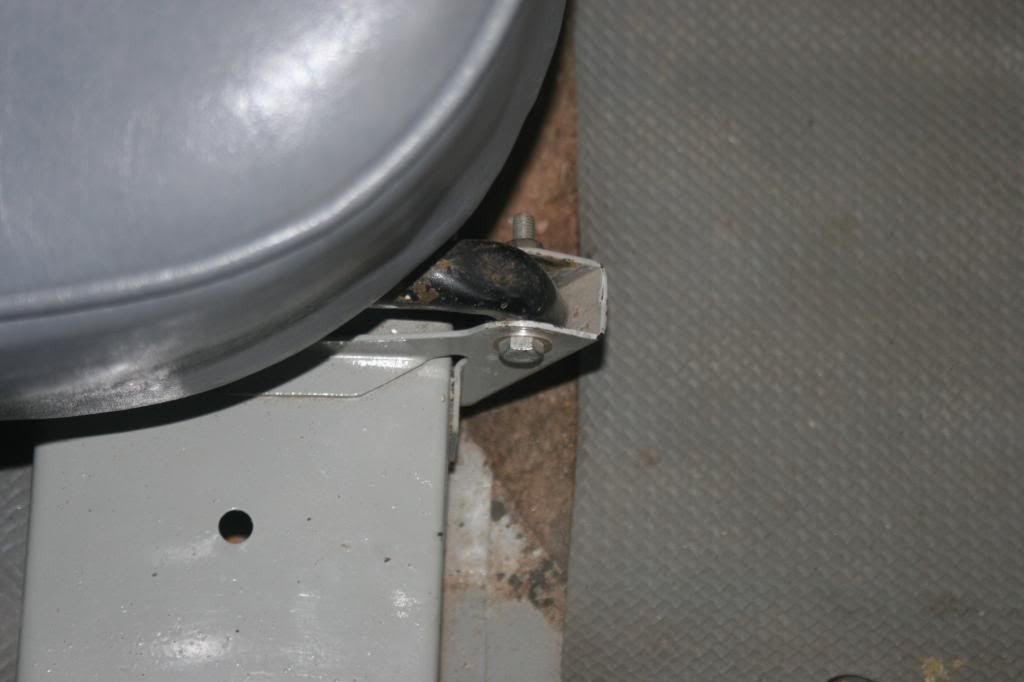
'59 doors had a square drain hole in the doors for water to get out of the channel under the sliding windows
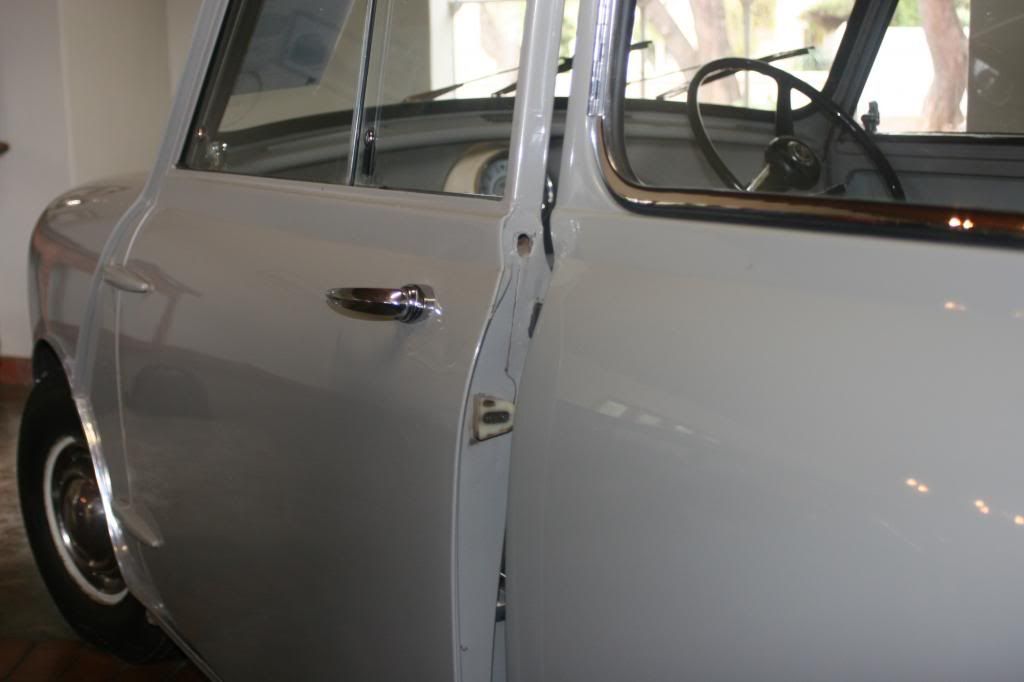
Front interior - Check out the straigh gear stick.
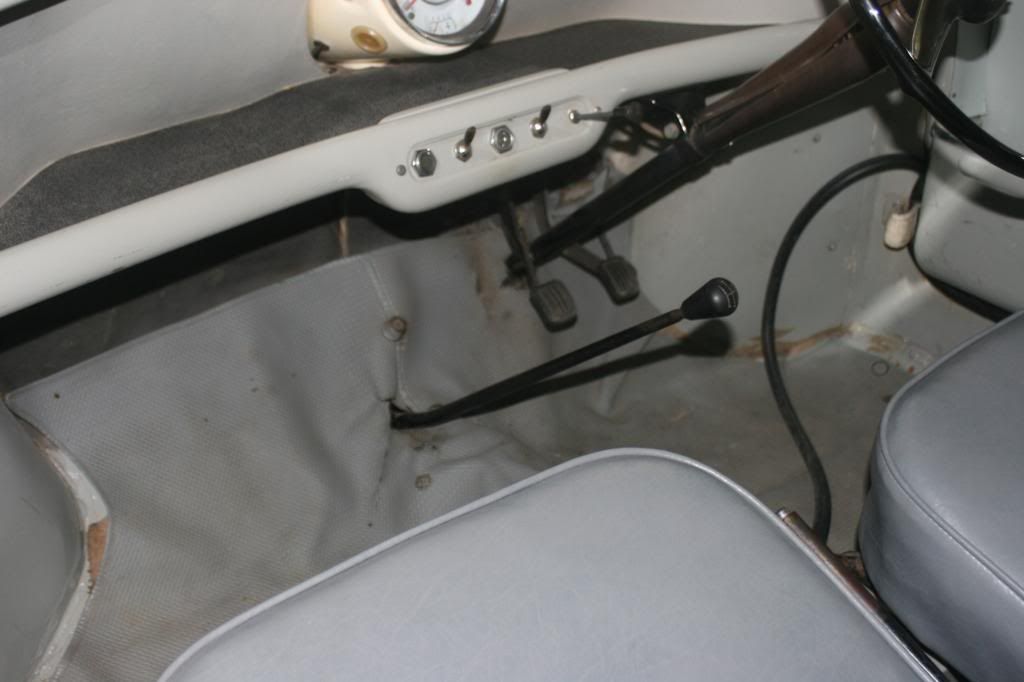
rear interior
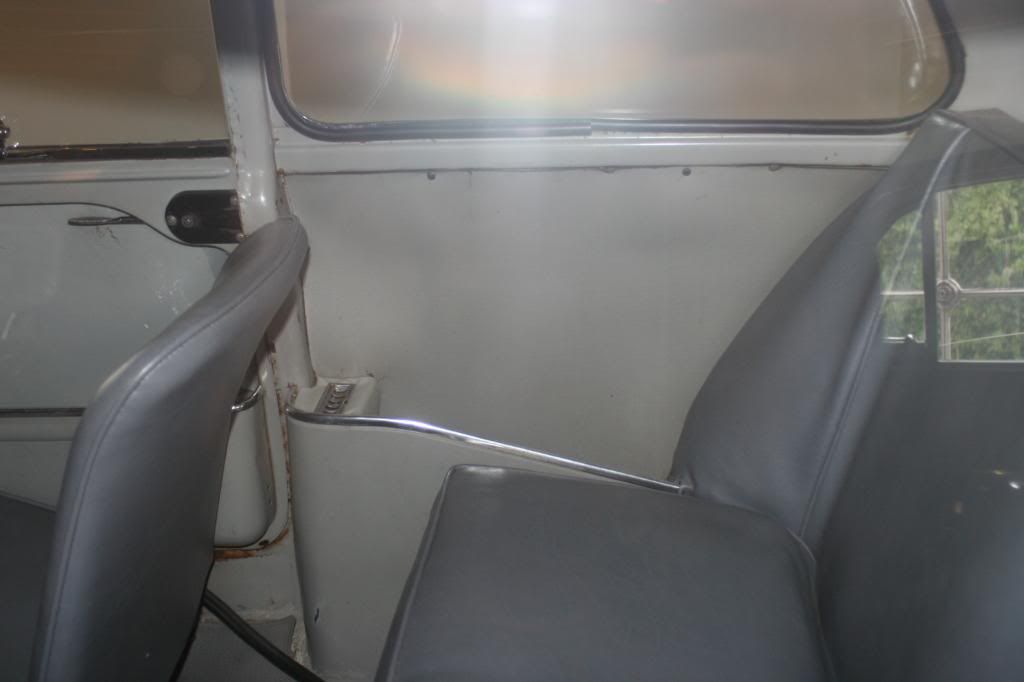
Early Austin speedometer with white face, red needle and no 1/10 of a mile counter on the odometer. Also note the flat switch panel and the cardboard (not vinyl) grey dash panels on both sides of the speedo.

Narrow rear side window clips
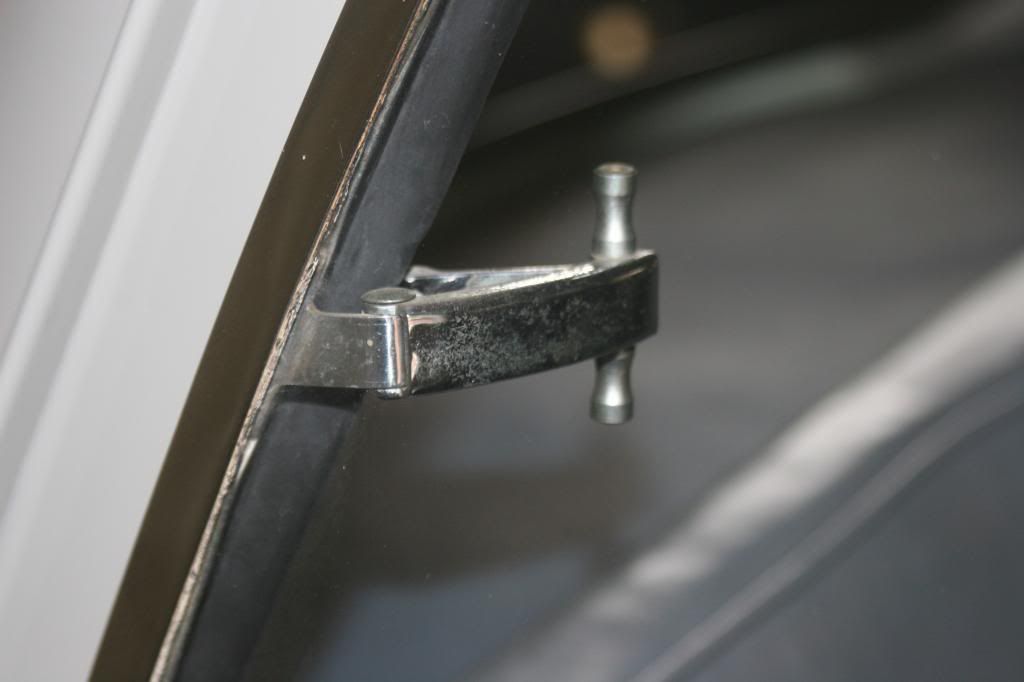
Front sliding windows had only one hole in the glass where the window clips mounted, which lead to them doing this (see pic). This was rectified in later models which had clips mounting in two holes.
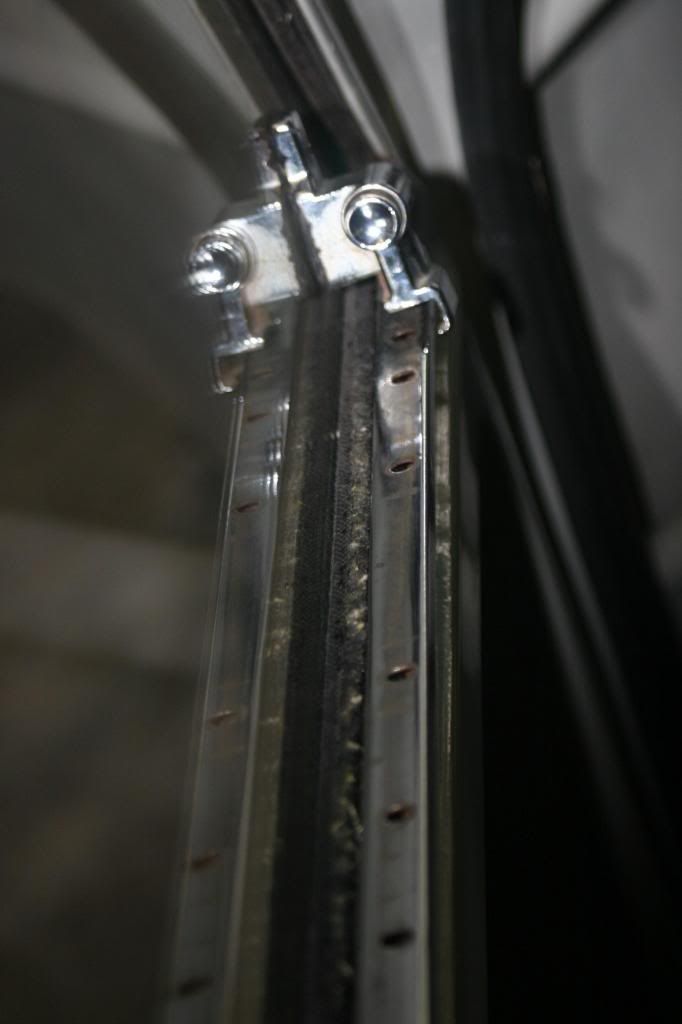
Little lights in the rear bins
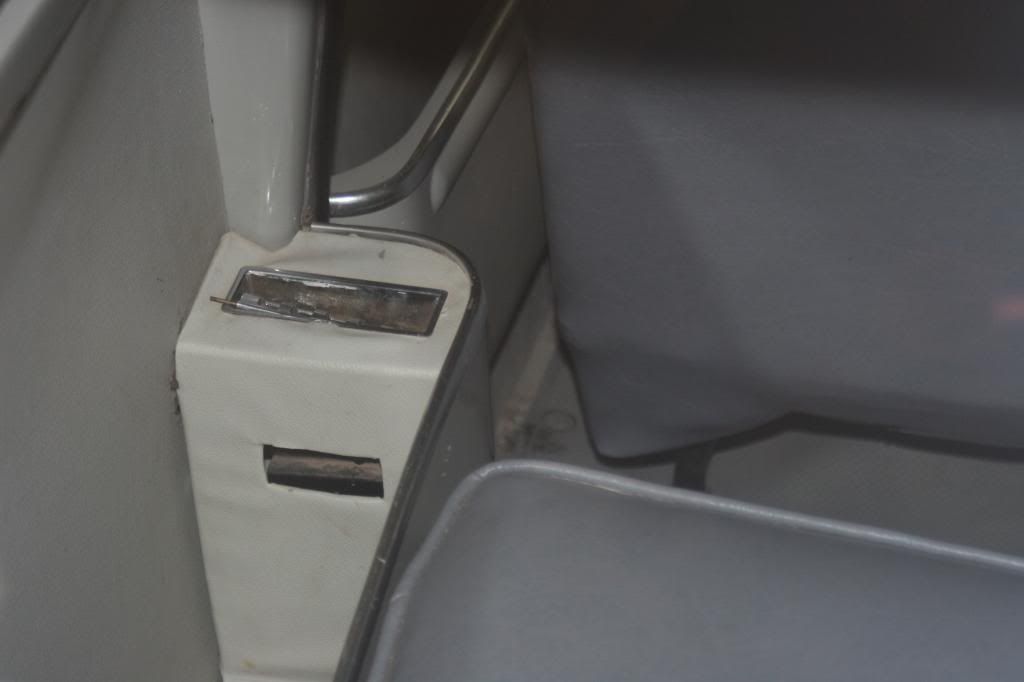
Engine bay - early features include triangular radiator top mounting, flat thermostat housing.
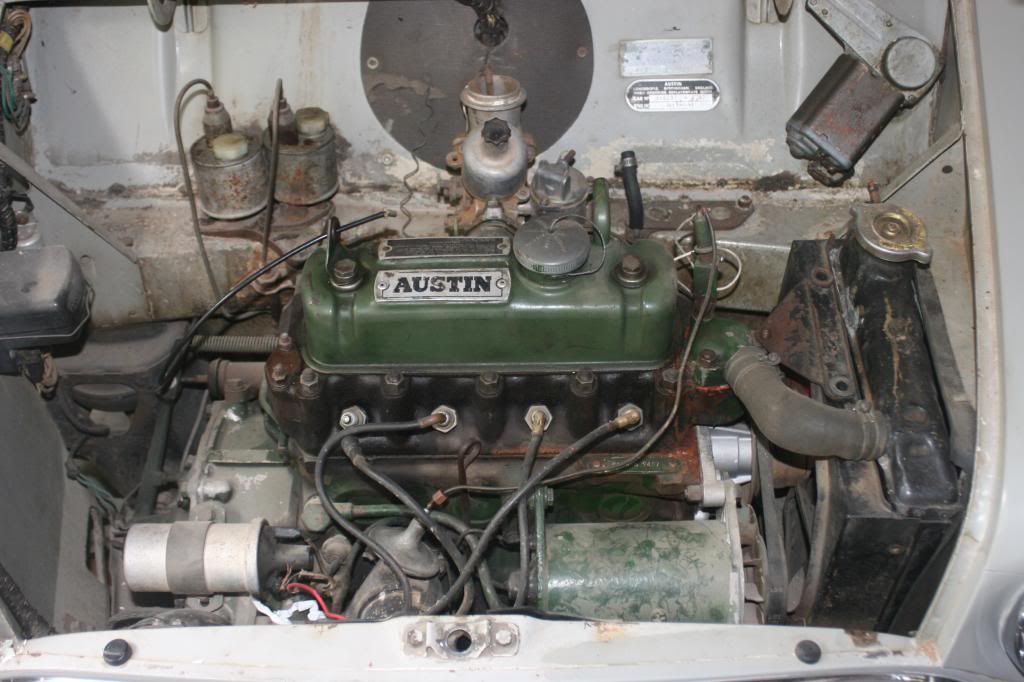
Wheel trim with rectangular holes. Later cars had D shaped holes.
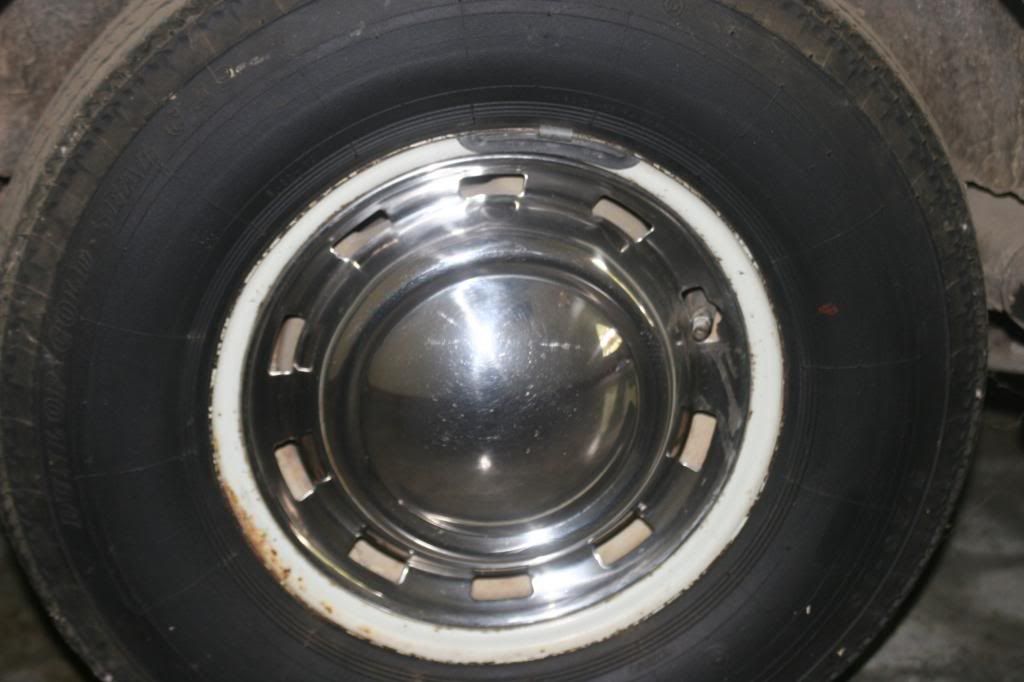
It's not often that one gets the chance to see a 1959 model in the flesh. I heard about a Mk1 mini at the Matjiesfontein Transport Museum a while back and on a trip north I stopped in for a look. To my pleasant surprise it was not only a Mk1 but one from 1959!! The wiper motor reads 11 59 which makes it a November model. I took some pictures of some of the early features that distinguishes '59ers and early 1960's from later cars. There is a site dedicated to 1959 minis www.1959miniregister.com/ which will tell you all about changeover dates of the different features and other interesting things (if you are a nerd like me).
As I've mentioned on another thread on here, Ryno's book notes that a lot of the interior trim on SA assembled minis were local right from the start. This obviously makes it unique and extremely rare as not many '59ers survive. I'll let the pictures do most of the talking from here: (will give more info later)

No front reflectors - like UK cars

Rear - I guess the really early ones were still called Austin Seven in SA. They soon turned to Austin 850.

59's had short little peg legs on the back of the seats

In front, the seats were mounted on brackets welded to the crossmember

'59 doors had a square drain hole in the doors for water to get out of the channel under the sliding windows

Front interior - Check out the straigh gear stick.

rear interior

Early Austin speedometer with white face, red needle and no 1/10 of a mile counter on the odometer. Also note the flat switch panel and the cardboard (not vinyl) grey dash panels on both sides of the speedo.

Narrow rear side window clips

Front sliding windows had only one hole in the glass where the window clips mounted, which lead to them doing this (see pic). This was rectified in later models which had clips mounting in two holes.

Little lights in the rear bins

Engine bay - early features include triangular radiator top mounting, flat thermostat housing.

Wheel trim with rectangular holes. Later cars had D shaped holes.

